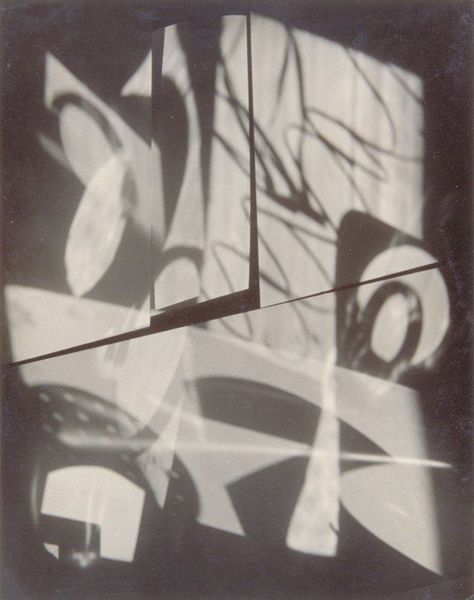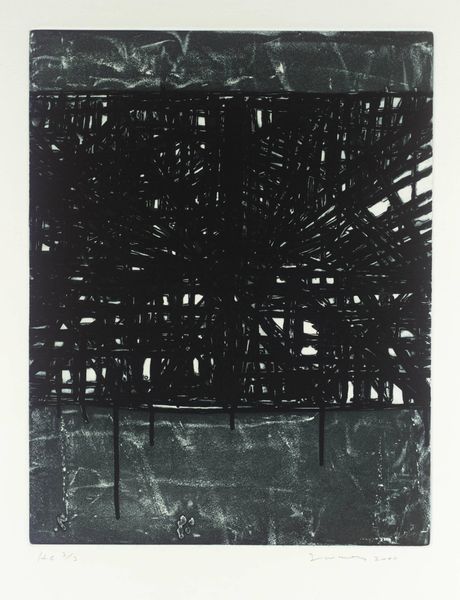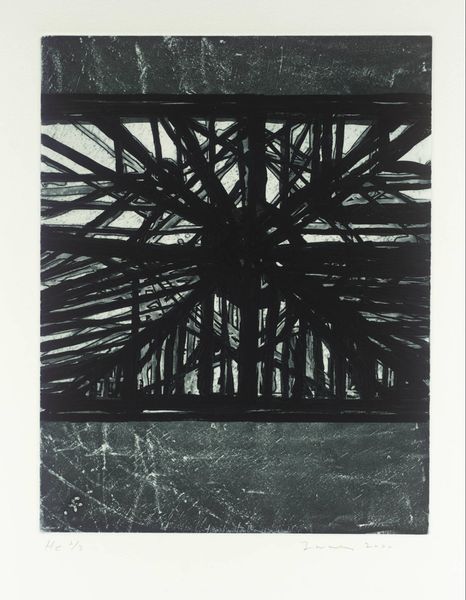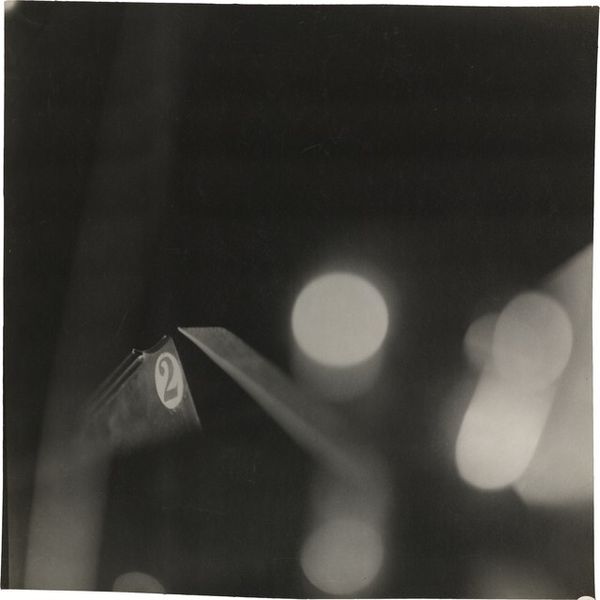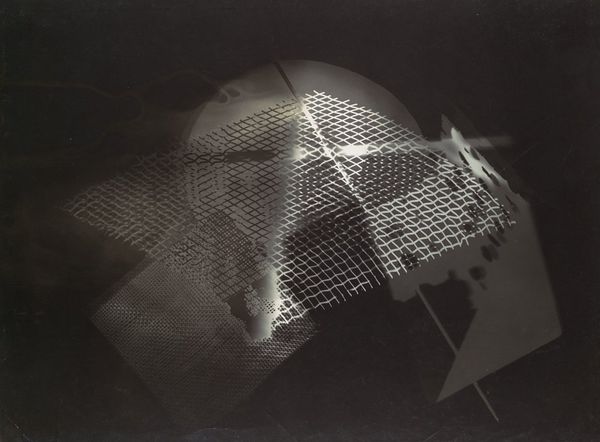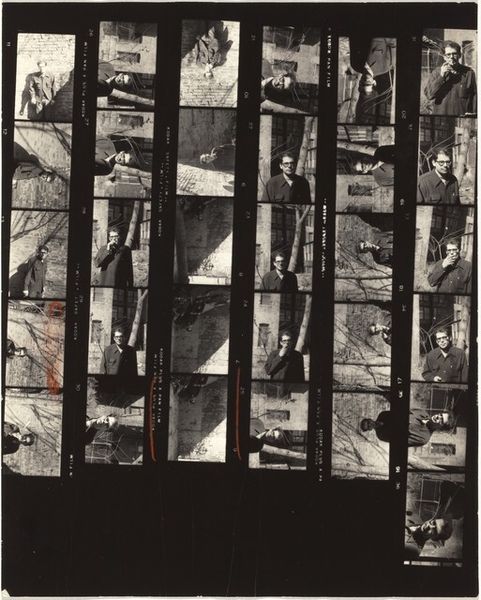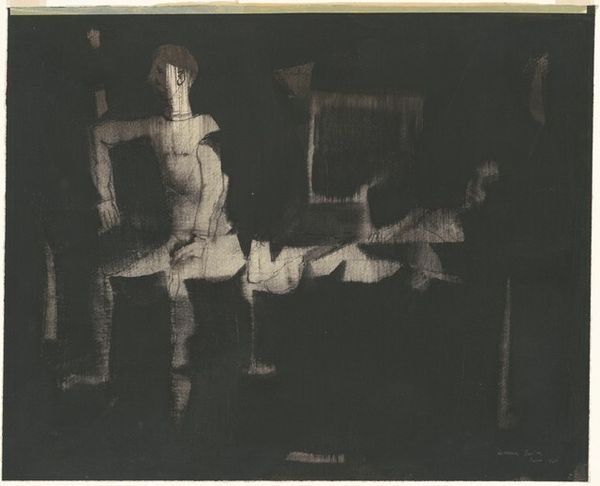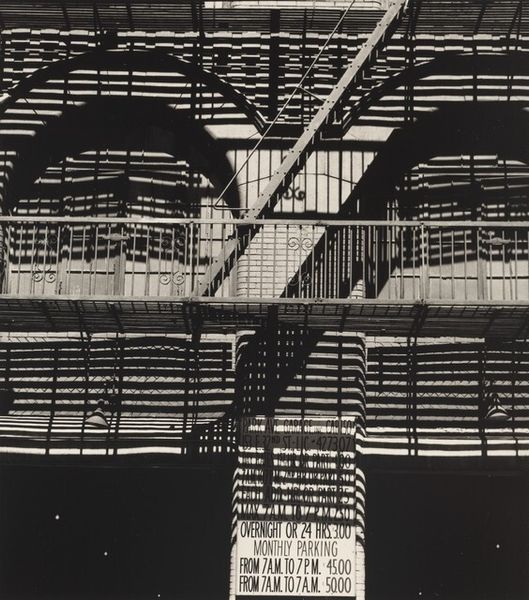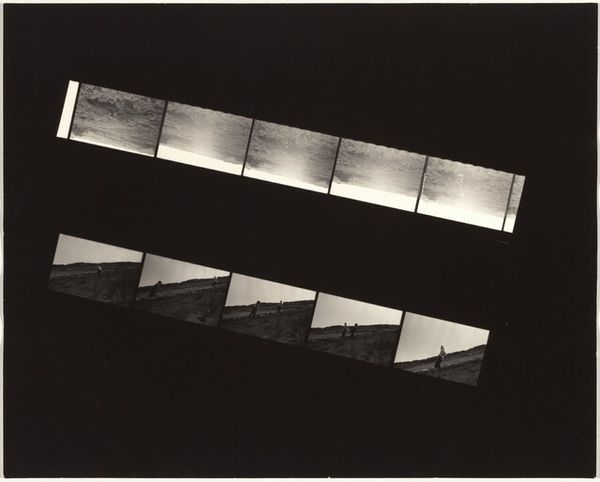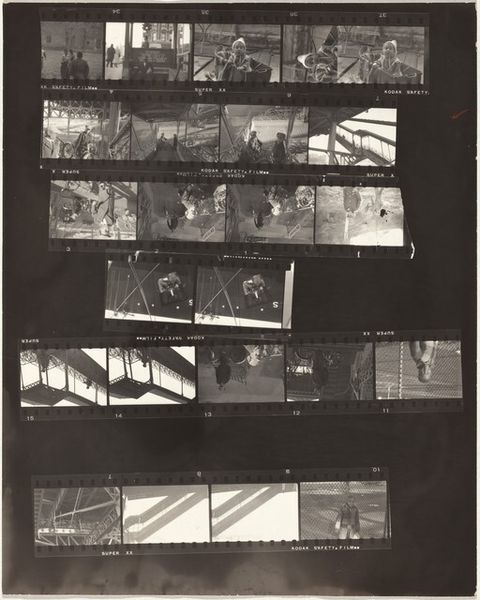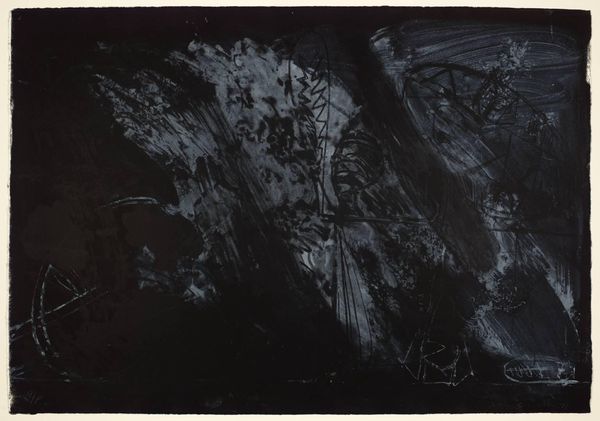
photography
#
constructivism
#
photography
#
geometric
#
cityscape
Dimensions: sheet (trimmed to image): 22.1 x 21.5 cm (8 11/16 x 8 7/16 in.) overall: 50.8 x 40.6 cm (20 x 16 in.)
Copyright: National Gallery of Art: CC0 1.0
Curator: Looking at "Paris," a 1928 photograph by Jaroslav Rössler, one can see a compelling interplay of light and shadow. It appears to be a view of train tracks from an unusual angle. Editor: It's immediately striking. The high contrast and sharp geometric shapes give it a somewhat unsettling feeling. It makes me think of anxiety, or the feeling of being trapped. Curator: Rössler was deeply involved in the Constructivist movement. The work uses photographic techniques to reduce the urban environment into geometric forms. Consider its engagement with the social impact of technology during that period. Editor: Yes, absolutely. The visual vocabulary screams Constructivism, that fascination with industry and urban landscapes transformed into abstract compositions. I think he's definitely tapping into the zeitgeist of early 20th-century anxieties about the mechanized world and the loss of individual identity within it. There is something slightly dystopian in this image to me. Curator: The deliberate use of black and white is essential here, really highlighting the themes of modernity and how photography could reconstruct reality itself. You could say this is a comment on the period's changing visual culture. The way the photo fragments and abstracts, to me that echoes with the Cubist approaches his contemporaries were exploring in painting. Editor: What's interesting is how Rössler plays with depth of field and vantage point. By looking either upwards or downwards through that lattice we’re only provided snippets. In our contemporary context, this reminds me of contemporary notions of surveillance and restricted access to certain urban realms. Curator: This picture really speaks volumes on how the built environment molds human experiences. I also read his works through critical perspectives by questioning the representation of public spaces as well as examining the role of avant-garde aesthetics in voicing social anxieties of industrial advancement and its impact. Editor: It's amazing to think that an image so clearly rooted in a specific time and place continues to speak to concerns that remain relevant today about technological progress, power structures, and our perception of our place within cities.
Comments
No comments
Be the first to comment and join the conversation on the ultimate creative platform.
